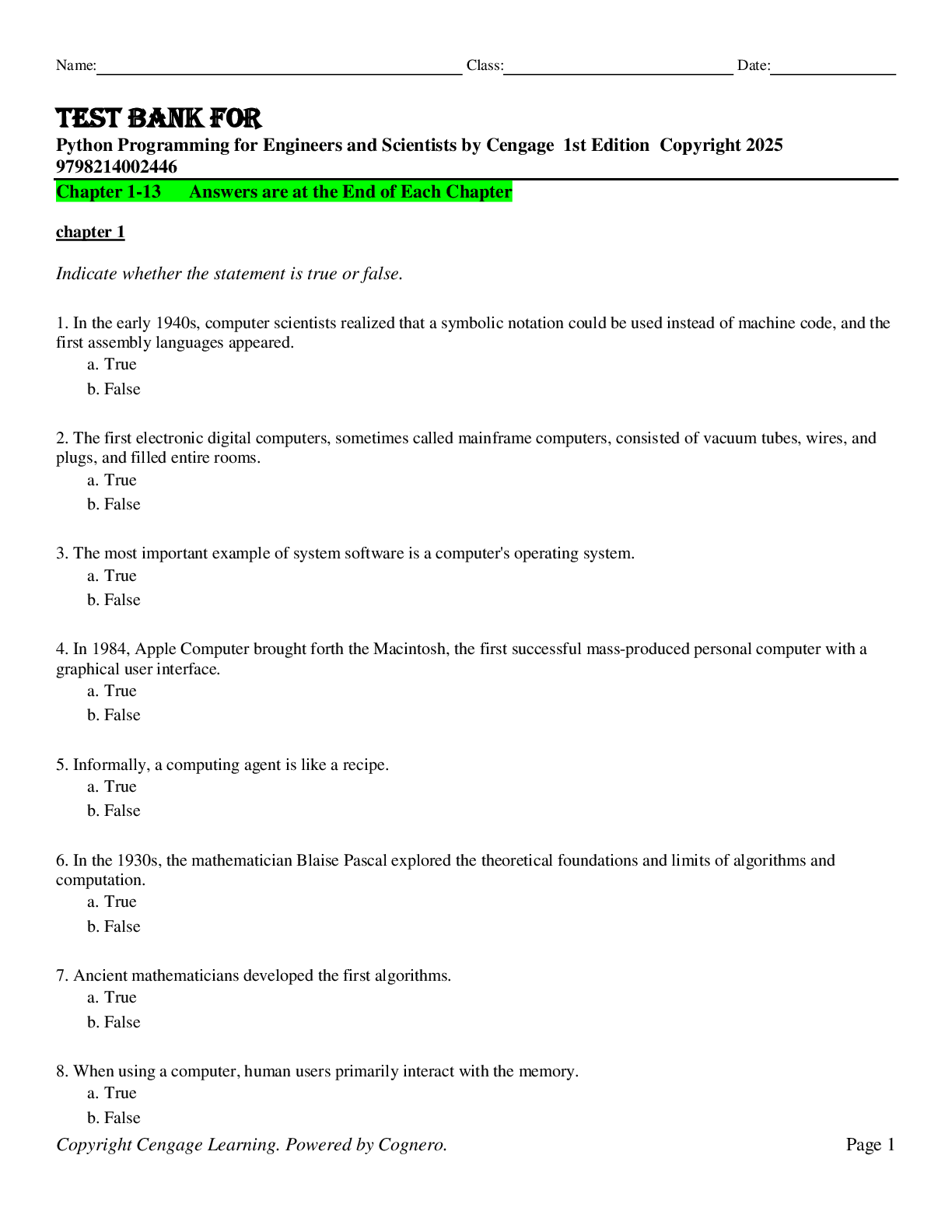
Test Bank For Python Programming for Engineers and Scientists by Cengage 1st Edition Copyright 2025 9798214002446 Chapter 1-13 A+
*NURSING > DISCUSSION POST > NR 512 Fundamentals of Nursing Informatics week 7 (All)
A new concept for some organizations is to allow nurses to bring in their own devices known as bring your own devices (BYOD) to use at work. What are some of the security issues you might encounter ... if this were allowed? How would you address these issues? In 2014, the Theft Resource Center said that the healthcare industry accounted for forty-two percent of all major data breaches (Elrefaey, 2015). In regards to informatics, patient privacy is the of the utmost importance. To uphold their privacy, organizations must invest in state of the art security systems and have strict security policies. In order to manage healthcare security, there “must be a continuous recording, reporting and analyzing of the metrics presenting performance of the security system” (Elrefaey, 2015, p. 61). With the advancement in technology today, some companies are allowing their employees to use personal electronic devices instead of providing the equipment. This new trend is referred to as BYOD, bring your own device. Clearly there are pros and cons to this idea. These companies view BYOD positively because they see money savings in not having to provide electronics to employees and thinking the employees may put more work in since they can access it from anywhere (Hackler, 2015). Cons to this idea, that perhaps these companies have not considered, is the cost of installing security systems with the appropriate requirements for BYOD. That being said, according to Hackler (2015), personal electronics are not “locked down under the same protections as company devices” (p. 5). Also, the incidence of mishandling information has the potential to increase when it’s stored on personal devices. On the flip side, it has become a necessity for physician’s to be able to use personal devices. Informatics has given doctors more freedom and flexibility by being able to access patient information from their smart phone, tablet, or personal computer. This increases efficiency for both the doctor and the nurse, therefore it leads to more efficient patient care. At my hospital the doctors can access the EHR from anywhere. I know first hand, as most nurses do in this day and age, how convenient this can be. Nurses cannot access patient charts outside of the hospital, which is good, but we can access the ARC (the hospitals special internet system) that houses education, email, pay information, and so forth. In order to access this information we must download and install an application called SecureAuth on every device we plan on using. Without this application you will not be granted access to this area. Considering the pros and cons, BYOD is acceptable for physicians but in my opinion not for other ancillary staff members. Healthcare organizations, big and small, must keep BYOD to a minimum and invest in top-notch security systems and security surveillance as well. [Show More]
Last updated: 3 years ago
Preview 1 out of 3 pages

Buy this document to get the full access instantly
Instant Download Access after purchase
Buy NowInstant download
We Accept:

Can't find what you want? Try our AI powered Search
Connected school, study & course
About the document
Uploaded On
Jul 12, 2021
Number of pages
3
Written in
All
This document has been written for:
Uploaded
Jul 12, 2021
Downloads
0
Views
115
Scholarfriends.com Online Platform by Browsegrades Inc. 651N South Broad St, Middletown DE. United States.
We're available through e-mail, Twitter, Facebook, and live chat.
FAQ
Questions? Leave a message!
Copyright © Scholarfriends · High quality services·